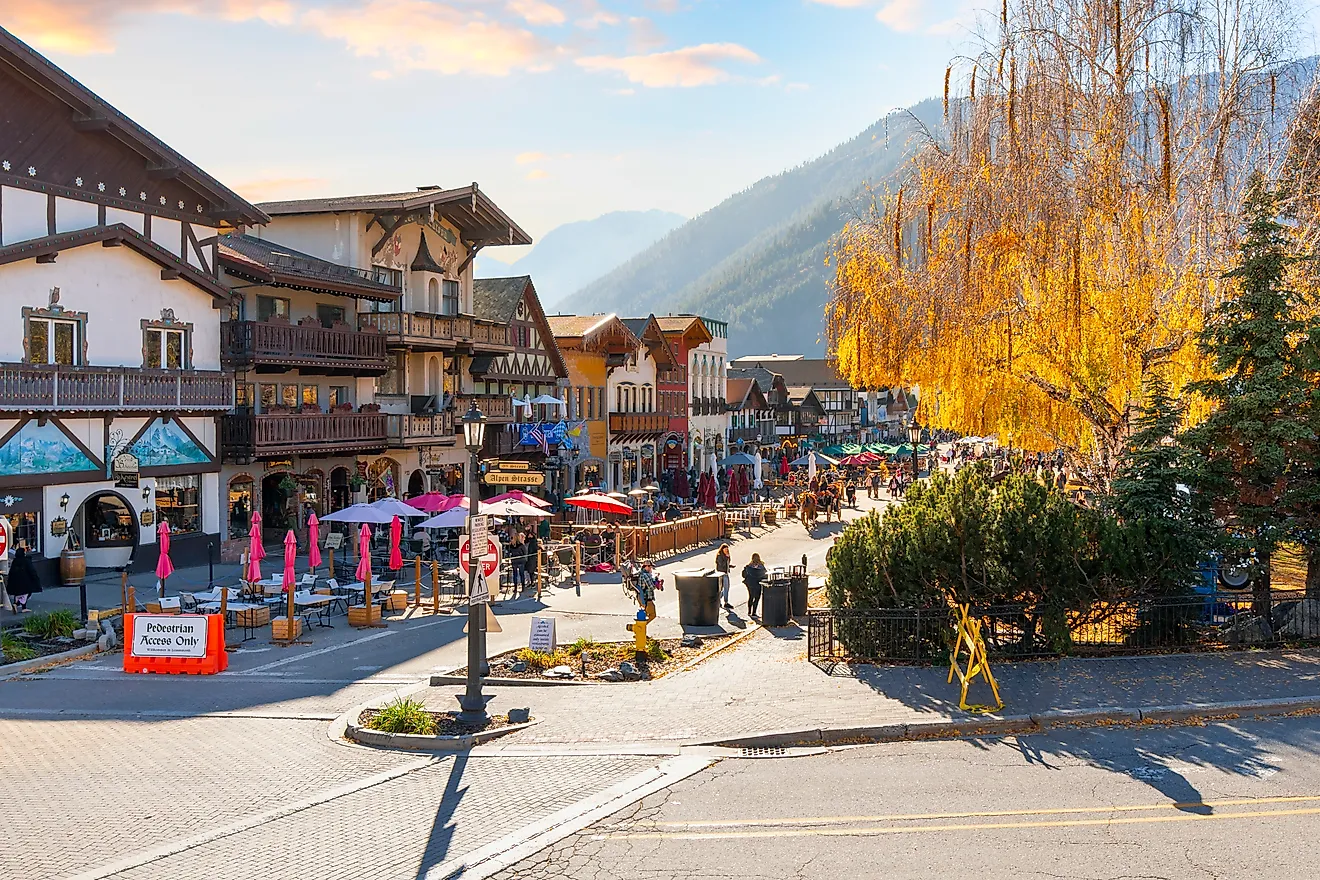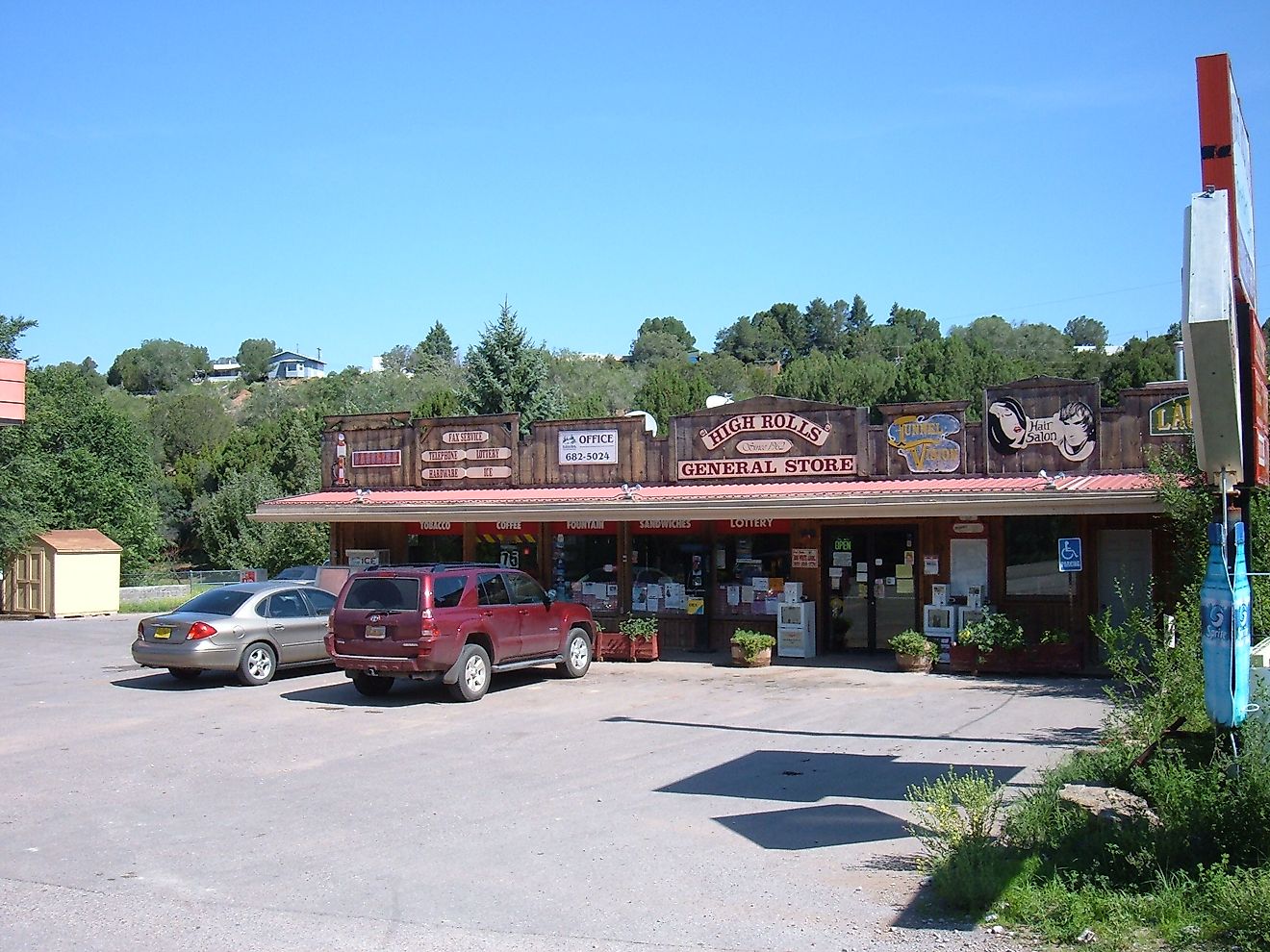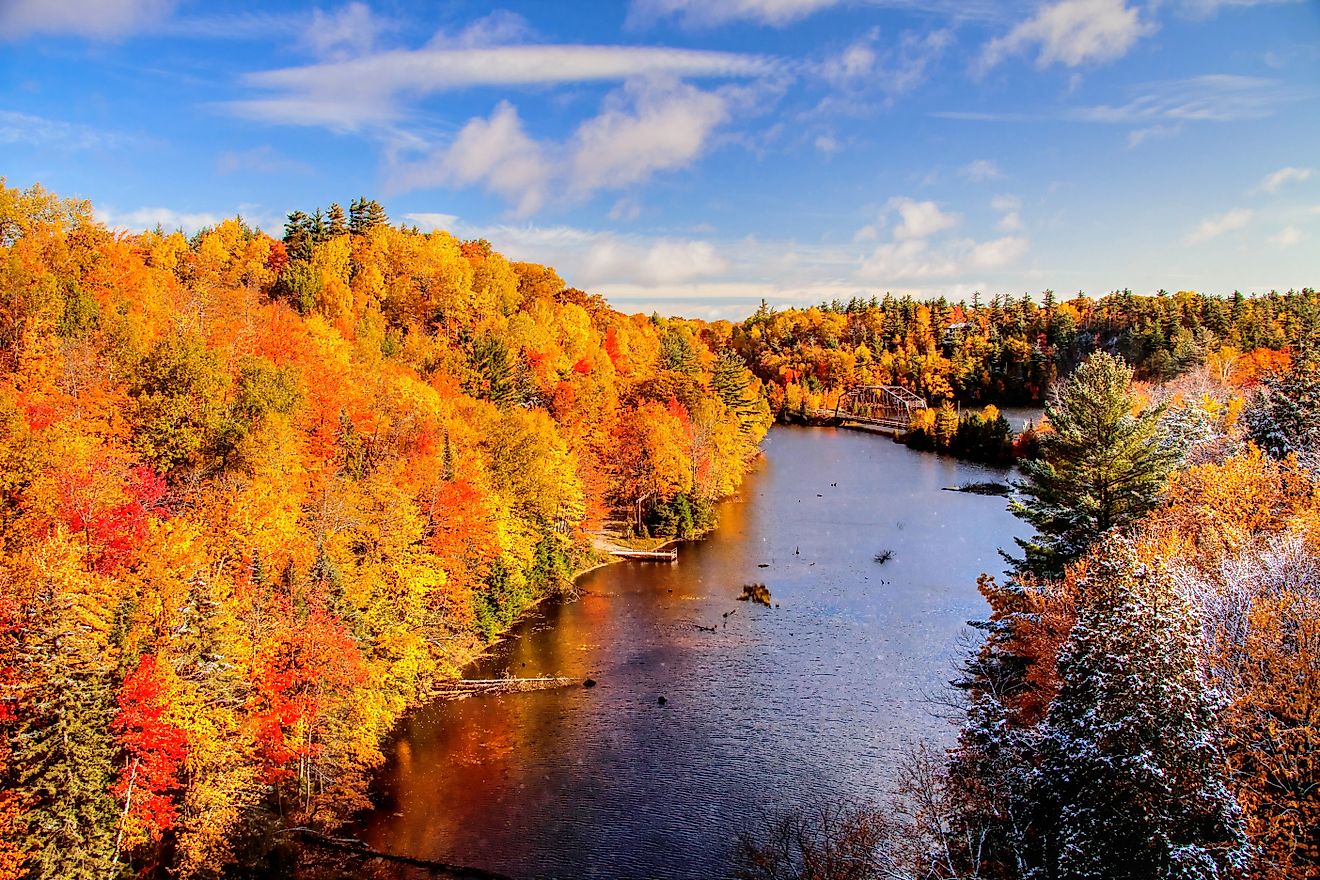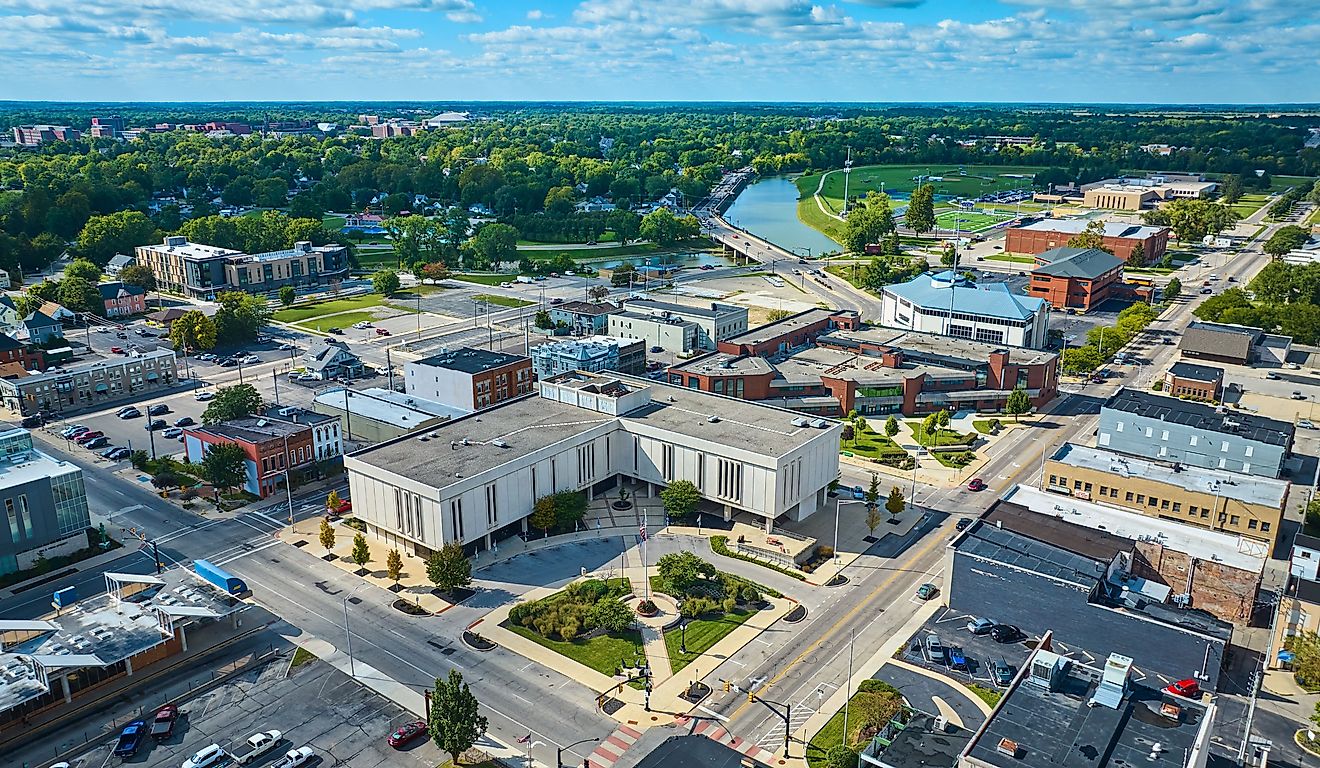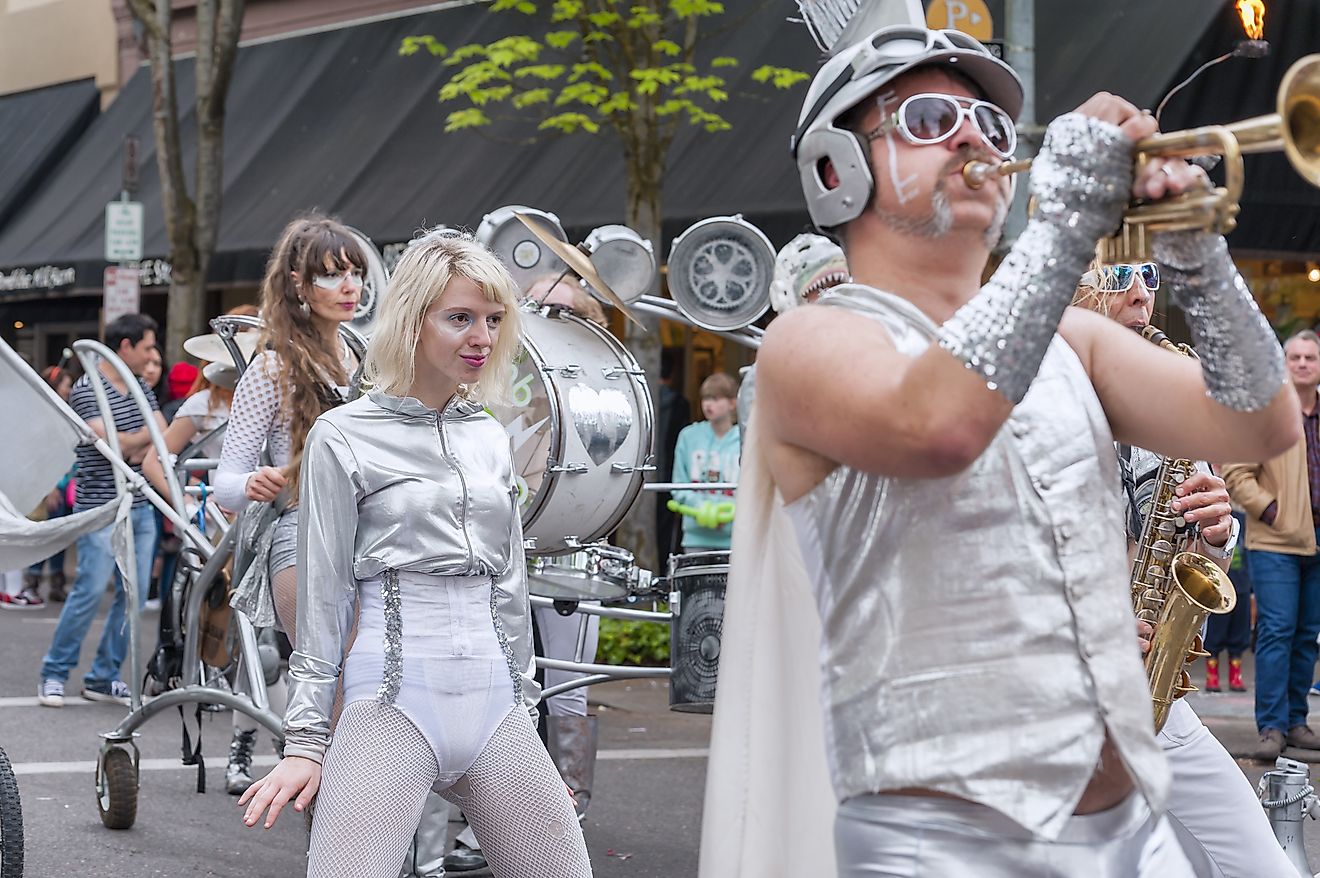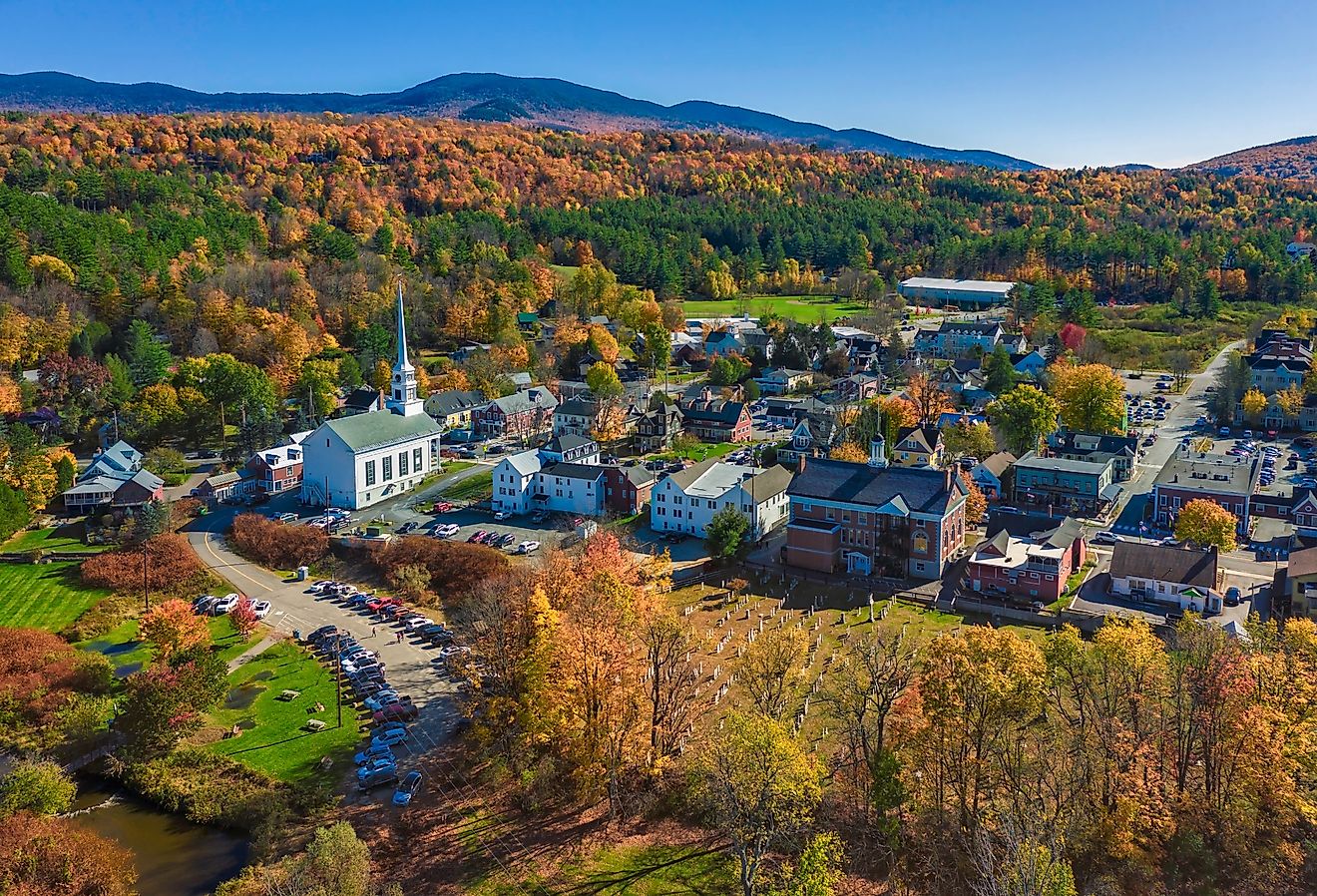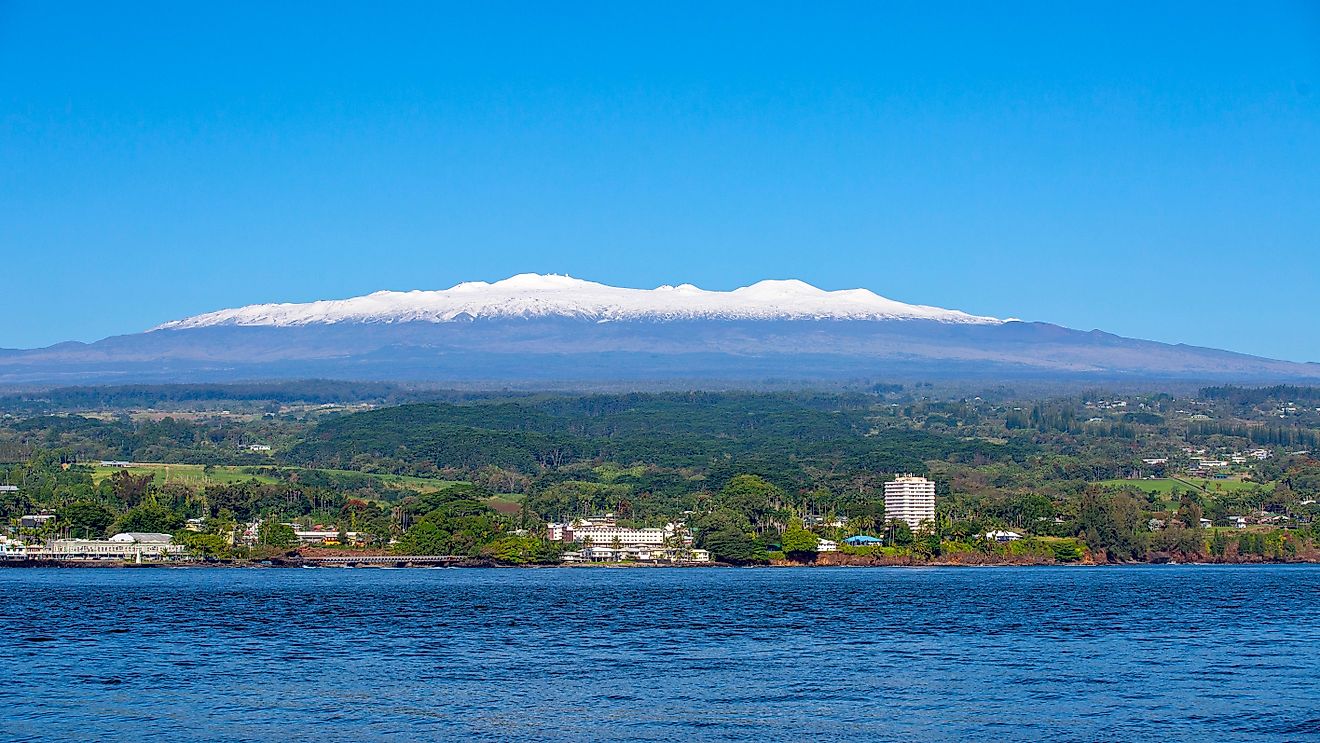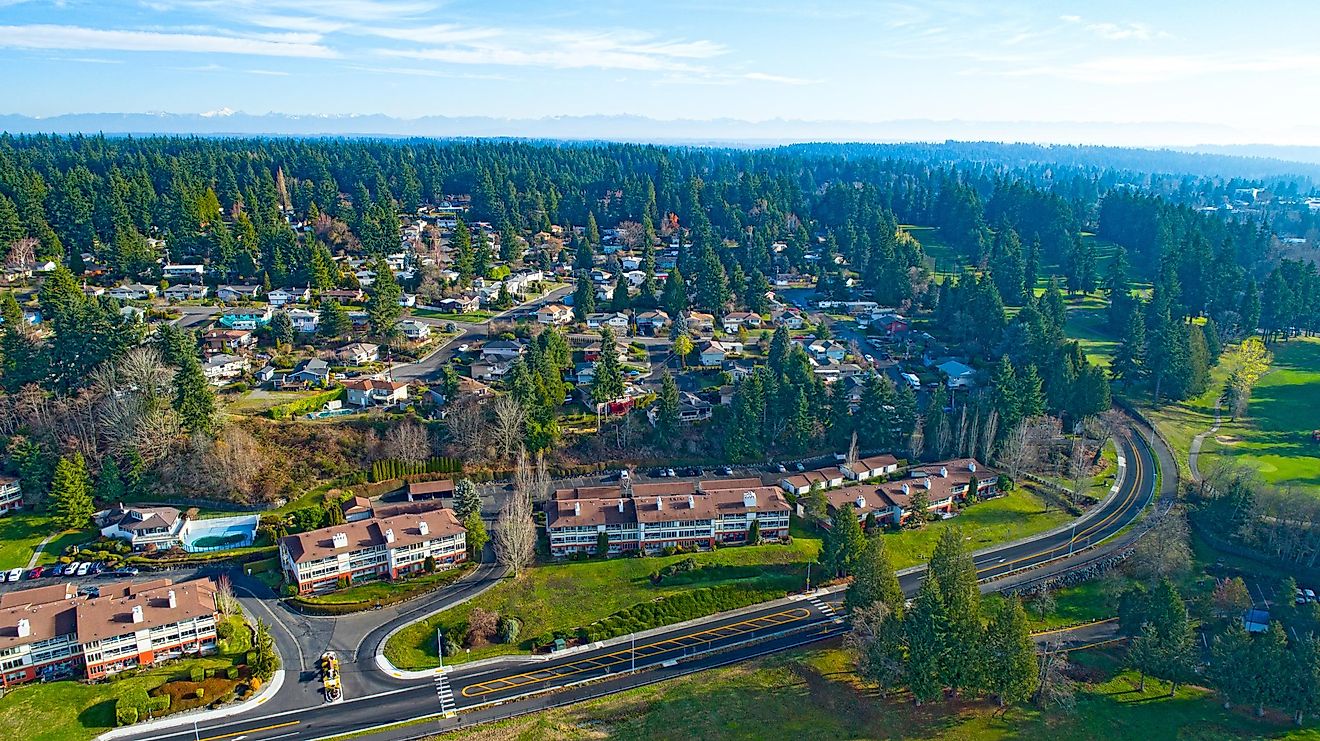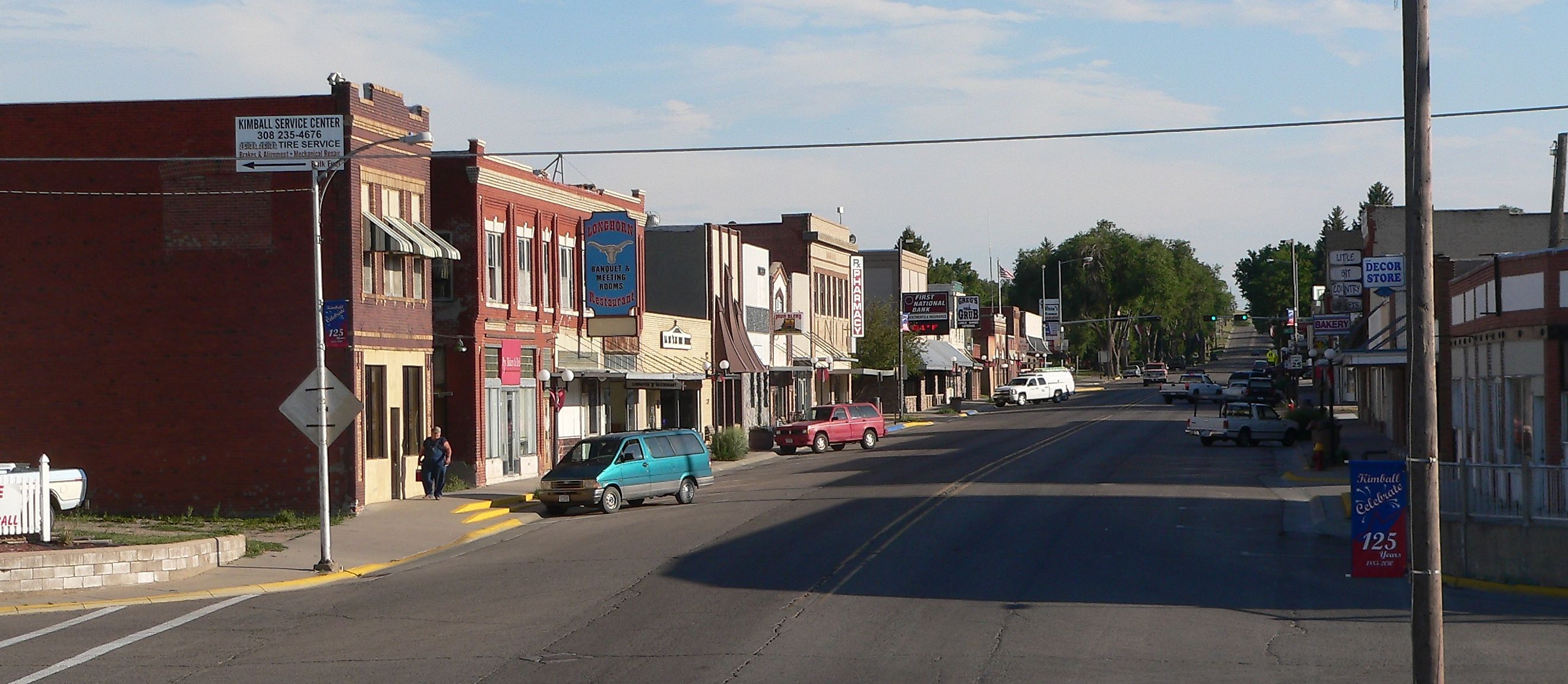
13 Prettiest Small Towns In Nebraska
The Midwestern state of Nebraska is home to remarkable sights, thanks to its numerous pretty towns that are a feast for the eyes. From Stone Age settlers' remnants, who arrived more than 13,500 years ago, to prehistoric rock formations dating back 280 million years when an asteroid struck the region, Tree Planters' State has plenty to showcase. Away from the bustle of city traffic, its sparsely populated enclaves provide a genuine glimpse into those landforms.
Such small towns and villages possess no shortage of exquisite spots to admire the setting sun amid the cold breeze along the open plains and rolling hills of the Sandhills or the banks of the Missouri and Platte Rivers. Moreover, the following towns boast just as many Gilded Age architectural marvels as they do natural wonders. Their historical ties continue to preserve Nebraska’s signature architecture, complementing its topographical features. This pleasant combination makes them ideal for those who appreciate the dual legacy of cultural and geographical heritage. Let's visit 13 of the prettiest small towns in Nebraska.
Brownville
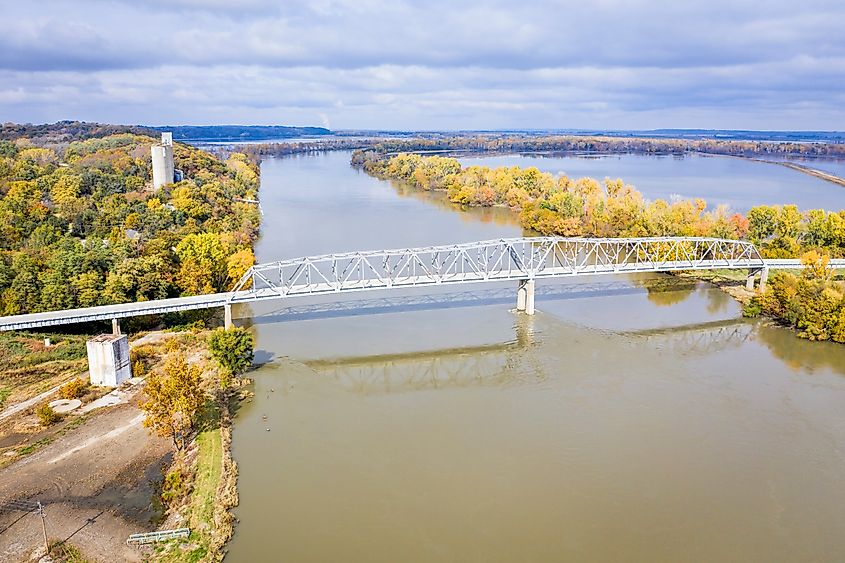
Nemaha County’s Brownville is one of Nebraska’s most historically intact towns, with structures dating back to the mid-1800s. Located along the bank of the Missouri River, Brownville's colorful farmlands, such as Whiskey Run Creek Vineyard & Winery, stretch wide beneath the open sky, their fields bathed in the mellow glow of the setting sun. The air hums with the whisper of the river, and local favorite spots such as Capitol Square Park and the Lewis and Clark Camp Site seem to hold their breath in the warmth before twilight falls.
Once a central trading hub, Brownville retains much of its original architectural aspects. The village’s well-preserved buildings and mansions now house museums like the prestigious Brownville Depot & Railroad History Museum. The Governor Furnas House, home to Nebraska’s first elected governor, now provides guided tours while the ancient-looking Brownville Village Theatre, one of the oldest repertory theaters in the state, still fills seats. Similarly, Antiquarium, an antique bookstore, sits in a former schoolhouse. The Spirit of Brownville enables tourists to cruise along the Missouri River.
Chadron

Chadron’s most significant attraction is Chadron State Park, located just outside the main town, offering outdoor recreation and stunning views through hiking and horseback riding. The city also carries multiple fishing locations, including Bordeaux Creek, Box Butte Reservoir, and Chadron City Ponds, much to the delight of water enthusiasts. The town’s location near the Pine Ridge escarpment allows for exploration of Nebraska’s other nearby tourist spots, including the Pine Ridge unit of the Nebraska National Forest, where bald eagles can be found, as well as white-tailed deer, mule deer, bobcats, and coyotes. Chadron includes some of the state’s oldest homes, with the Chadron Federal Building featuring columns of neoclassical design.
The Bordeaux House stands as a well-preserved relic of the small city's frontier days, featuring Italianate architecture with tall windows and ornate woodwork. The appearance of Chadron’s streets emphasizes its varying climatic moods, with its wide main street turning dusty in the summer and lying under snow through the long winters. Most of the area’s monuments are constructed with locally sourced brick, lending a warm, reddish hue to the town’s signature color palette. The Museum of the Fur Trade is a key attraction that sums up the events leading to the commercialization of the city. Exhibits feature artifacts from the 18th and 19th centuries, including tools, clothing, and trade goods used by trappers and Native Americans, mainly the Oglala Lakota and Cheyenne tribes.
Red Cloud
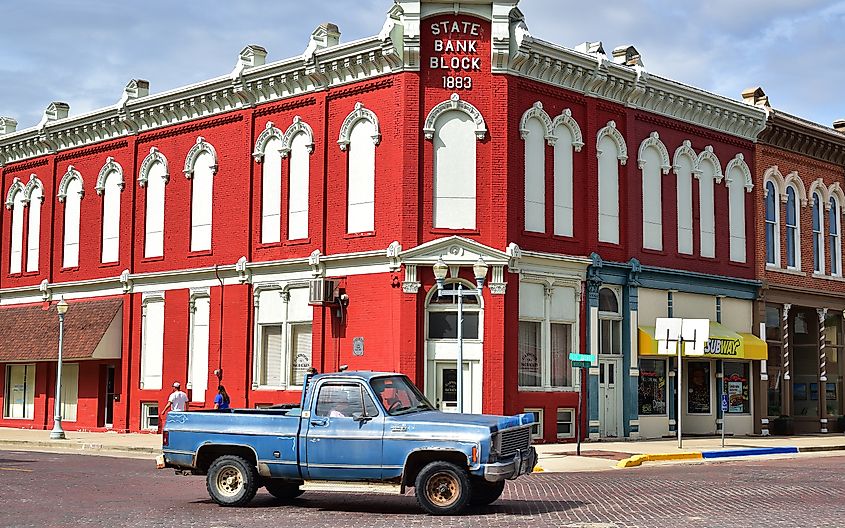
The remote town of Red Cloud is embraced by nature in all directions. This Webster County enclave sits near the Republican River and maintains a strong sense of preservation. Indian Creek Pond Wildlife Management Area contains riparian woods along the Republican River. Wood ducks, ospreys, eagles, woodland woodpeckers, and passerines might be seen during migration seasons. Red Cloud Pond and Crooked Creek are other wetland bodies between the town and the river, strengthening its status as a perfect nature escape. Red Cloud is also remembered as the hometown of author Willa Cather, whose work was inspired by the early settlers of the Great Plains.
The Willa Cather Foundation manages several significant sites in Red Cloud, including the writer's childhood home and other estates, the Opera House, alongside the iconic 1888 Renaissance Revival Farmers and Merchants Bank, also known as Garber Bank. Guided tours take visitors through these locations, providing context on how they influenced her writing. Early 20th-century brick storefronts and vintage signage, such as the massive wooden Starke Round Barn, emphasize its historical and literary heritage.
Minden

Renowned for its winter shenanigans and festivities, Minden is surrounded by grasslands. It is only 15 miles from the Platte River and the bankside scenery of Rowe Sanctuary. Minden lies near wetland footprints, with the nearby Gleason Waterfowl Production Area serving as a nature preserve that protects dozens of duck species. The city is also home to the Harold Warp Pioneer Village, a broad collection of artifacts that tell the story of American innovation and daily life over the past two centuries. The museum complex includes more than 26 buildings filled with historic items, from vintage automobiles to antique furniture.
The spirit of Minden’s small town reveals itself in the warmth of its gatherings and the cheer of its establishments. Runza Restaurant stands at its entrance and extends a ready welcome. Minden has gained further recognition for its dedication to holiday traditions, earning the nickname “Nebraska’s Christmas City.” Each year, the Kearney County townsfolk decorate Courthouse Square with thousands of lights and other ornaments as part of the Christmas Pageant, a tradition that dates back over a century. This event brings together residents and visitors to celebrate the season with parades, music, and festive displays.
Ogallala
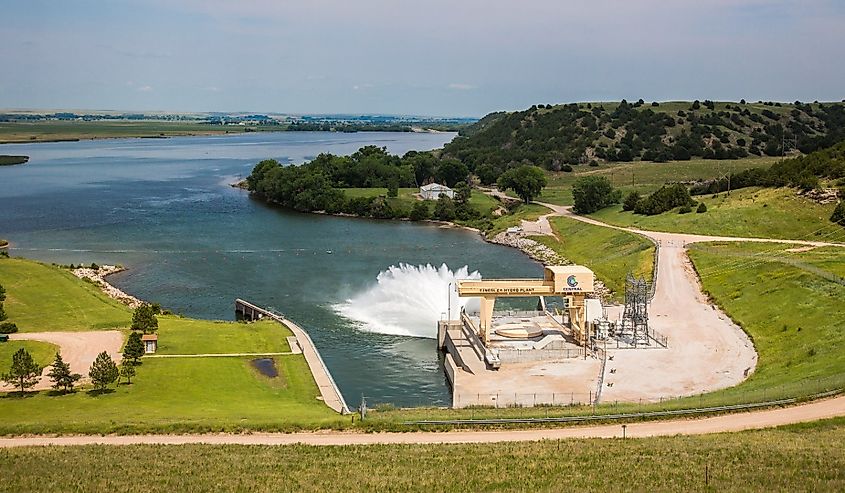
Tucked along the South Platte River in western Nebraska, the “Cowboy Capital of Nebraska” still retains the echoes of its past while simultaneously posing as a splendid water-surrounded destination. Keith County's town has multiple ponds, the biggest of which is Lake McConaughy. While Kingsley Dam and the hydro plant separate the smaller Ogallala Lake, several recreational areas provide mesmerizing views. The sandy beaches are ideal in the summer for fishing walleye and white bass, while boating and even windsurfing offer closer adventures within the river. The southern end of Ogallala is encompassed by the South Platte River, and its proximity to Nebraska’s largest reservoir and the sense of space that defines this part of the High Plains further enhances its allure.
Ogallala's sandy shores and deep waters serve as exceptional beach-like sites for the Midwest. The town once served as a frontier outpost and a key stop along the Texas Trail, and there is no shortage of sightings to reminisce. The city welcomes visitors for its ties to history. Front Street, a discretely recreated Old West district, keeps the town’s cowboy spirit alive. Visitors might imagine the clatter of spurred boots stepping on the boardwalk as they pass its wooden storefronts. The place also preserves its frontier legacy with its name honoring the Native American Oglala (Oklada) Sioux tribe. The Petrified Wood Gallery carries a collection of Native American arrowheads and artifacts.
Tecumseh
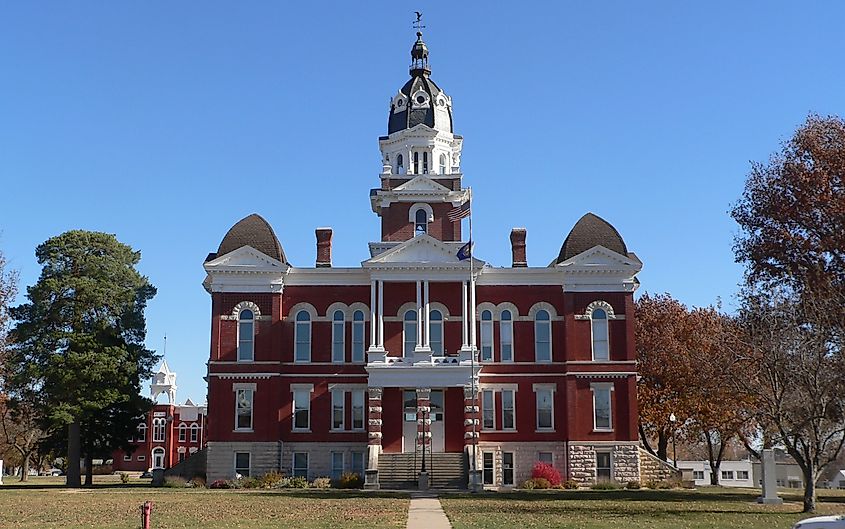
Tecumseh embodies the steady rhythm of small-town life and Nebraska’s agricultural heritage. Tecumseh is a vital part of Nebraska’s farming backbone, where visitors can glimpse the state’s agrarian identity and sense the steady rhythm of the land. Tecumseh City Park comprises tree-lined walkways and sun-dappled picnic spots, bathed in shifting patterns of gold and green. Twin Oaks Wildlife Management Area provides a habitat for various fish found in the Big Nemaha River, which also passes along the town. Community traditions hold firm against time’s passage; Tecumseh hosts seasonal events, including farmers’ markets that showcase the region’s harvest: corn, soybeans, and pumpkins laid out in careful rows beneath the changing sky. Come autumn, golden leaves gather along the steps of the courthouse.
Named after the legendary 18th-century Shawnee chief, Tecumseh is well ahead in preserving its rural character. Tecumseh City Hall and other structures present Romanesque and Classical Revival-style architecture at the town square. Anchoring its downtown, the Johnson County Courthouse remains one of Nebraska’s finest structures, flanked by 19th-century buildings that house local businesses. Other historical remnants, from preserved one-room schoolhouses to old brick storefronts, bear witness to Tecumseh’s past. The aptly named, kid-friendly museum Sticks, Stones, and Bonez can take you further back into history.
Kimball
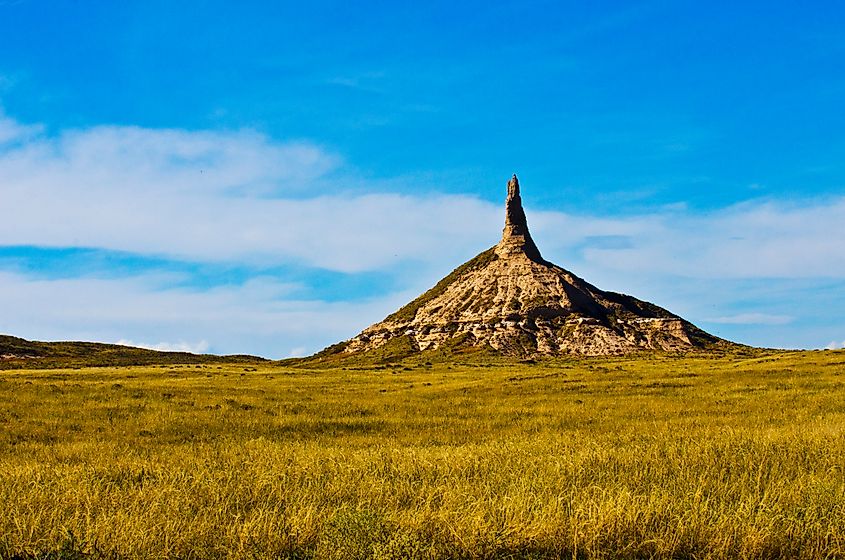
Kimball, a city in the county of the same name, is a gateway to the High Plains, distinguished by its ranching heritage and splendid elevation. Located at the Midwest’s westernmost edge, it's known for vast skies and rolling plateaus, contrary to the Cornhusker State's more densely populated regions. Kimball County's most notable landmark is Panorama Point, the highest natural elevation in Nebraska at 5,424 feet. Seventeen miles further in that direction, Colorado’s Eastern Plains-based Pawnee National Grassland stands as one of the neighboring state’s most beautiful terrains. Kimball’s hills are more subtle than dramatically cold and towering, creating an unbroken canvas of the sprawling plains.
Nearby, Oliver Reservoir provides a rare aquatic retreat in this semi-arid region, with parks and recreational sectors to everyone's amazement. It also treats visitors to multiple activities such as fishing, boating, and camping along the banks of Lodgepole Creek, a tributary of the South Platte River. Four Winds Golf Course is open to the public, a breathtaking painting coming to life with blue sky and greenery all around you. Steeped in history, Kimball was once home to numerous Cold War-era missile silos, a remnant of the US nuclear defense strategy. Formerly the Kimball Atlas E Missile Site, the facility is now a private home, though other bases remain scattered around F.E. Warren Air Force Base in Wyoming.
Niobrara
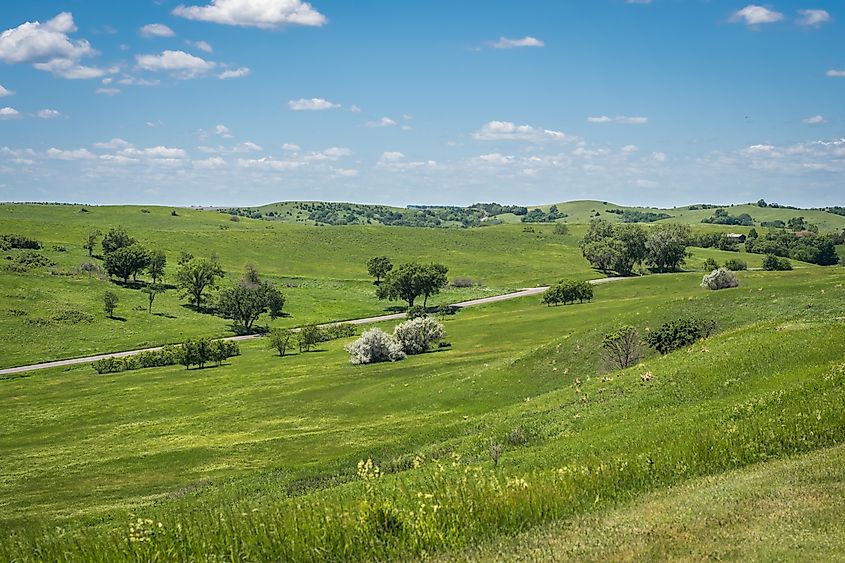
Niobrara sits at the confluence of the Niobrara and Missouri rivers like a semi-island. Surrounded by sediment-rich wetlands, the Niobrara River delta meets golden grasslands that stretch toward the horizon. Sunsets overlooking Verdigre and Niobrara Valleys are breathtaking, complemented by Niobrara State Park’s sweeping views of the river junction. Niobrara Adventures is a campground that has emerged as a favorite among tourists. Rising from a hilly region, it fulfills most vacationers' checklists, from trekking and picnicking to fishing. The village’s boat ramping services also offer the option to board shuttles. Broad wildlife, including deer and bald eagles, adds liveliness to the region. Ohiya Casino & Resort is a well-known private getaway in the area.
Being a quiet countryside, Niobrara isn’t static and continuously transforms its already stunning surroundings with the seasons, from misty river mornings to golden autumn hues. Founded in the 1850s, its residents had to move twice due to severe flooding. Indigenous communities, including the Ponca and Omaha, share historical connections, while the Santee Sioux Nation still lives here. The Santee Sioux Reservation has preserved its customs since the 1860s. Spreading over 172 square miles, it stretches from Niobrara to Lewis and Clark Lake and Miller Creek along the Missouri River.
Shubert

Shubert is a small southeastern village not far from the Missouri River; tiny Deroin Creek and Whiskey Run stream south near the town. The region's ravines and hardwood forests extend into Indian Cave State Park. The iconic park is home to prehistoric petroglyphs, believed to be the work of Indigenous peoples, including ancestors of the Omaha and Ho-Chunk tribes. An ADA-accessible boardwalk, particularly an 8-foot-wide viewing deck, and a red bridge, grants a fine view of the land’s wild grace. Fauna of all kinds inhabit the area, from the steady-footed white-tailed deer to the watchful barred owls.
Its main street features greenery, with trees on virtually every pedestal under white sheets of cloud, effortlessly casting light onto its platted old buildings. These include Shubert Library & Museum and Saint Ann Catholic Church, two ravishing mid-20th-century red-brick structures. South of Shubert, Sardine Creek extends 13 miles into the Big Nemaha River, reaching fellow bewitching sites within Richardson County, such as Verdon Lake. The abandoned town of St. Deroin allows a closer glimpse into Nebraska’s pioneer past, with its old cemetery standing as a solemn reminder of those who once lived along the riverbanks.
Harrison
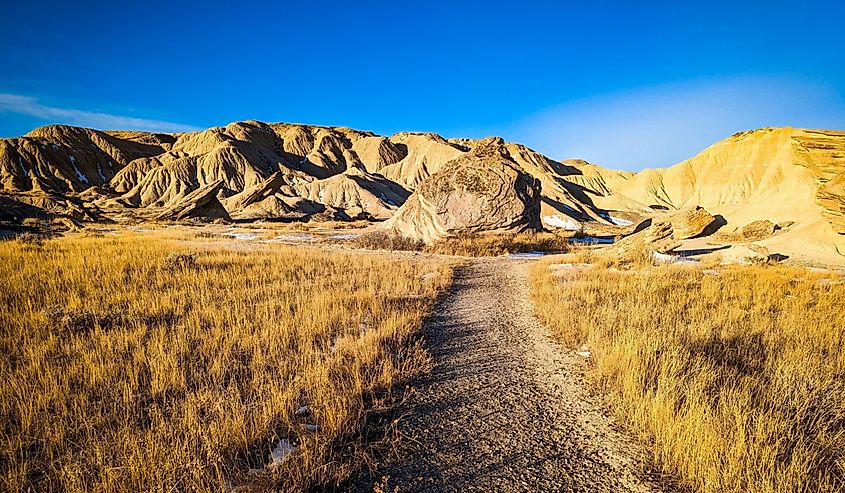
Harrison is Nebraska’s least-populated county seat and the closest town to Toadstool Geological Park and Campground. With its jaw-dropping features dating back approximately 20 million years, it walks you through large, eroded rock formations sculpted over millennia. It is as good a spot for hiking as it gets. These pale, layered natural structures are often compared to a moonscape, especially with the layers inserted by fossilized remains of prehistoric animals. Ancient volcanic ash and sediment reveal the area’s distant past. Such sights stretch toward the horizon into the Nebraska National Forest and Oglala National Grassland. The valley is home to many of nature's finest creatures, such as Nebraska elk, mule deer, whitetail, antelope, and Merriam’s turkey. Hunting zones, including Hat Creek Valley Outfitters and Edwards Outfitting, allow for regulated hunting of these animals.
Despite its remote setting, the Sioux County village has long been a stop for travelers exploring Nebraska’s northwestern reaches. Nebraska Highway 29 runs through Main Street, where the town retains a quiet Western character, with longstanding buildings reflecting its frontier history. Lupine, spiderwort, and sunflowers further add layers to the grass-covered terrain. These grasses hold special significance, with species ranging from little prairie sand reed to blue grama. Located 25 minutes south of Harrison along River Road is Agate Fossil Beds National Monument, another gateway to prehistoric wonders comprising Miocene mammal fossils. More recent objects also occupy the shelves, with Plains Indian artifacts gathered from the Agate Springs Ranch.
Ponca
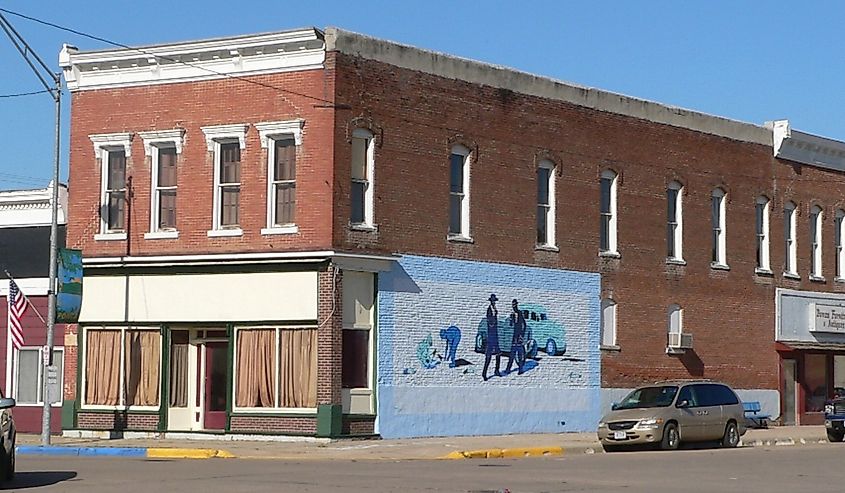
Separated from South Dakota by the Missouri River, Ponca invites you to absorb exquisite panoramic views. Just outside town, Ponca State Park welcomes tourists as one of Nebraska’s most visited natural areas. Its varied terrain sets it apart from Nebraska’s flatter and more grounded lands, allowing a peak into neighboring states of South Dakota and Iowa. Narrow streams of Aowa, Badger, and South creeks tumble through the landscape. Ponca’s streets reflect its early 20th-century roots, with historic brick and stone storefronts lining the downtown area.
Adams House Museum embodies the Victorian Era’s burnt-amber mansion vibes while exhibiting interactive displays of Ponca’s heritage and surrounding communities. The Dixon County Courthouse also echoes this architectural style. Ponca is also only 28 miles from the tripoint of Nebraska, South Dakota, and Iowa, marked by Dakota Dunes’ luxurious biking and walking trails and two golf courses. Besides relishing the riverside charm, the Siouxland region town allows travelers to learn about the area’s Indigenous history. The namesake tribe once thrived along these banks before being forcibly displaced in the 19th century.
Gering
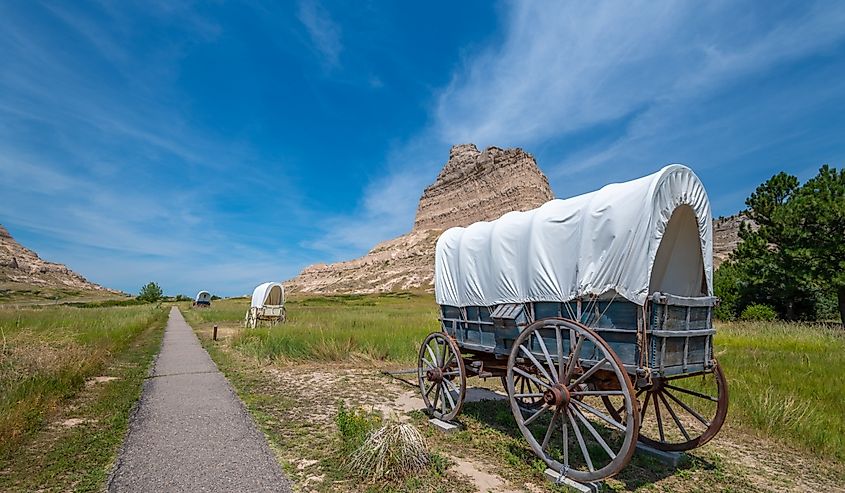
Gering rests along the North Platte River and is home to Scotts Bluff National Monument, a 3,000-acre park with astonishingly large and distinctive rock formations. Part of Scotts Bluff County, it looks after Nebraska’s westward expansion history, enabling access to natural sites that once guided settlers along the Oregon Trail. Near the monument’s entrance, the Legacy of the Plains Museum amazes spectators with historic farming equipment, household tools, and accounts of early inhabitants. Wagon ruts from the Oregon Trail still cut through the land, bearing witness to 19th-century migration. Saddle Rock Trail, one of the region’s most demanding hikes, leads to panoramic overlooks.
South of Gering, the Wildcat Hills State Recreation Area provides a pleasant experience distinct from the flatter regions to the east. Rolling Sandhills and scattered pines form a habitat where wildlife moves freely. The town also documents its trading past through Robidoux Trading Post, a reconstructed site recalling the era when fur traders and westward travelers relied on these frontier stations. Seventeen miles beyond the North Platte River, Lake Minatare State Recreation Area invites those seeking time by the water. Across the river, Captain Critters Country Campground regularly fills with RVs as tourists settle in for a picnic and take in the open air.
Valentine
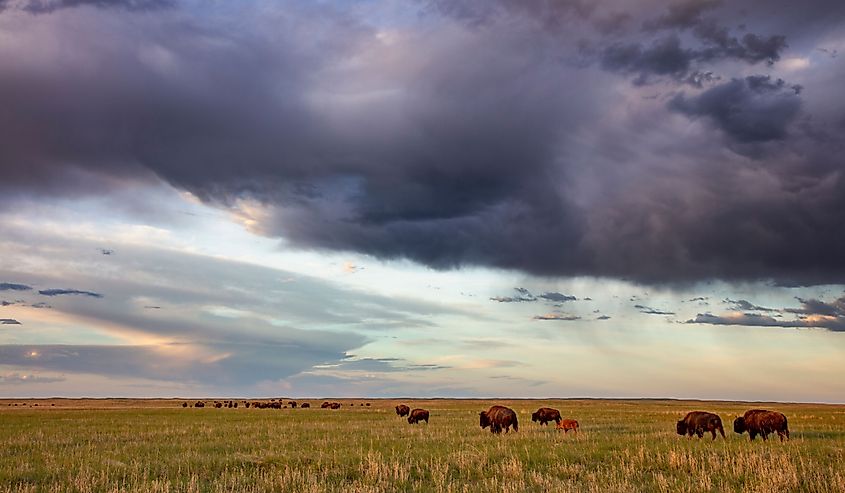
Valentine lies in north-central Nebraska near the South Dakota border and is known for its access to some of the state’s most breathtaking natural sites. Surrounded by the Sandhills, this town invites visitors who find thrill in open space, cerulean rivers, and pristine prairie grounds. The Niobrara River carves through the countryside, creating mesmerizing views of waterfalls, including the utterly splendid Smith Falls, the tallest in Nebraska. Niobrara River Bridge on Cowboy Trail is an iconic spot for visitors to immerse themselves in Valentine's beauty. Sharps Campground provides a picnic area with rental inventory fulfilling travelers' desire for rafting, kayaking, and tubing while fixating on the horizon. Nearby, the Fort Niobrara National Wildlife Refuge and Borman Bridge Wildlife Management Area safeguard the local ecosystem, where bison and elk can roam freely.
Within the city, Valentine City Park sets new standards for urban parks with its botanical garden, and its setting fosters a habitat for waterfowl and aquatic plants. The city experiences extremes of heat and cold as seasons move along, offering distinct experiences across its many attractions. Valentine also preserves its frontier heritage, with the Cherry County Historical Society Museum showcasing artifacts from the pioneer era and Indigenous communities. The 1897-built Centennial Hall Museum is a pleasant architectural attraction with institutional-style bricks and dressed stones. The Lakota people, who have long inhabited the area, continue to maintain a cultural presence there.
Discover The Beauty Of Nebraska
Nebraska has more to show than the towering skyscrapers of metro cities like Omaha and Lincoln. Near its countryside lies the Missouri River, winding along its eastern border, while the Sandhills ripple across its western plains. Few places in the American Midwest remain so deeply tied to history and the land itself. Towns that once marked railroad stops still stand; their architecture has been shaped by those who settled them generations ago. The Niobrara River's path graces various towns, associating them with gorgeous waterfalls and wildlife preserves, while the open prairie meets rock formations that guide pioneers westward. Valentine, Scotts Bluff County, and countless other places within the Cornhusker State preserve the marks of those who came before. Whether struck by meteors from the stars or built upon trails once traveled by wagon trains, Nebraska holds stories that stretch far beyond what first meets the eye, especially in these 13 prettiest small towns.
